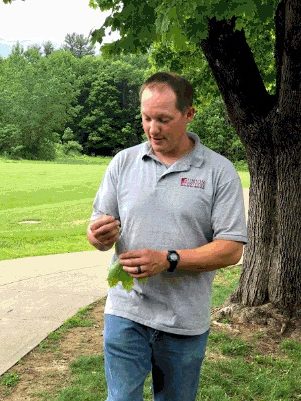Local Arborist Visits 7th Grade Students
On Thursday, Mr. Conti told students about The Red Maple Tree and how to differentiate maple trees. Red maple trees have a “v”-shaped sinus (the space between the points of leaves.) Sugar Maple Trees have a “u”-shaped sinus. The 7th grade students learned why the Hawthorn Tree in their school is in an area that is not easily accessible and is mainly meant for visual purposes and to pollinate. Part of the name of the tree contains a hint.
“It was interesting to learn about the trees we see everyday surrounding our school, and how to differentiate trees by their obvious features we don’t necessarily look at every day,” said Olivia Despres.
The students found the speech about trees not only furthered their knowledge of the natural world but was a good reminder about essential public speaking skills. Mr. Conti discussed his experiences in public speaking and how he improved how he spoke but also his self-confidence while speaking. The students were inspired by a statement he repeated multiple times, “You can do this! You were made for this! Now go do it!” Many kids took this to heart and said they will remember the words for future presentations. Besides the importance of belief you can do something, he also demonstrated some key techniques for keeping your audience engaged. Know your topic and have an organizational plan. He started by saying he was going to discuss 7 services trees provide and when he provided some elaboration about a topic, he would go back to counting on his hands (reviewing aloud what he had all ready covered, ensuring we were hearing it multiple times) to remind himself which of the 7 sub-topics he still needed to cover. He also included some humor to keep us engaged. He mentioned how order mattered when you noted that some trees are wind-breaks: “Don’t write break wind in your notes…that means something different!”
He made the information visual, providing two different types of maple leaves for comparison when were outside and doing the branch pattern dance (on a chair) while we were inside.
It was good to get outside for his visit but the topic wasn’t outside of the realm of ELA. In addition to reviewing elements of public speaking, we practiced efficient note-taking, were reminded about words form from roots (example: coniferous=cone bearing), practiced being observant which is key to writing and reading well, and again reflected on the process of our own maturation while checking out tree growth.

